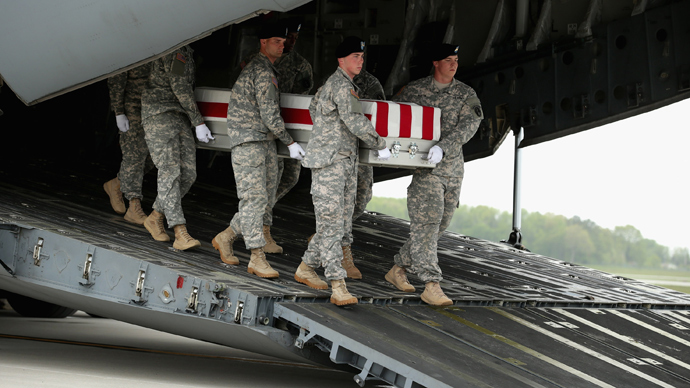Afghan combat deaths nearly double in 2013 fighting season, US casualties drop

As US military forces prepare to make a complete withdrawal from Afghanistan new figures reveal that nearly 80 percent more Afghan security forces were killed in the summer of 2013, compared to 2012, while the Afghan army experienced a 34% attrition rate.
A report from the Department of Defense made public Friday revealed that the number of Afghans killed each week surpassed more than 100 earlier this year. US officials, while refusing to release the figures these percentages are based on, also said that combat deaths among American and coalition troops fell by almost 60 percent over the same time.
Along with combat deaths, the one other startling figure included in the report is the nearly 35% attrition rate for the Afghan military over a one-year period, representing the loss of over 67 thousand troops. According to the DoD’s official figures those losses appear to have been covered by ongoing recruitment.
US military officials described the change in reported combat deaths as a “fundamental shift” and proof that the Afghan National Security Forces (ANSF) now provide more security for their own nation than the International Security Assistance Force (ISAF).
“The ANSF now conduct 95 percent of conventional operations and 98 percent of special operations in Afghanistan,” the report states. “The only unilateral operations that ISAF continues to conduct are ISAF force protection, route clearance, and redeployment…ANSF casualties have increased by 79 percent this reporting period compared to the same period last year, while ISAF casualties have dropped by 59 percent.”
The report was careful to mention that the high casualty rate, along with Afghans’ limited ability to help their wounded forces, “adversely affects morale, retention and recruiting.”
One senior Pentagon official speaking with The Guardian said that as the fighting season began to subside last month so have the number of casualties, with approximately 50 Afghans killed in action in one week. The Defense Department report released Friday covers the days from April 1, 2013 to September 30, 2013.
Autumn is currently in season in Afghanistan but Kabul, in particular, is notorious for cold winters with sub-zero temperatures and heavy snowfall.
The current plan is for all US and coalition combat troops to leave Afghanistan by next year, although a small number could stay in country past 2014 to help train and advise the security forces. Whether that possibility will come into reality depends on how ongoing negotiations between Afghan and American leaders proceed.
The report implied that if US forces do not stay past 2014, international aid could help the Afghans strengthen their abilities. But they “are not yet fully sustainable, and considerable effort will be required to make progress permanent,” it said. “After 2014, [the ANSF’s] sustainability will be at high risk without continued aid from the international community and continued coalition force assistance including institutional advising.”














